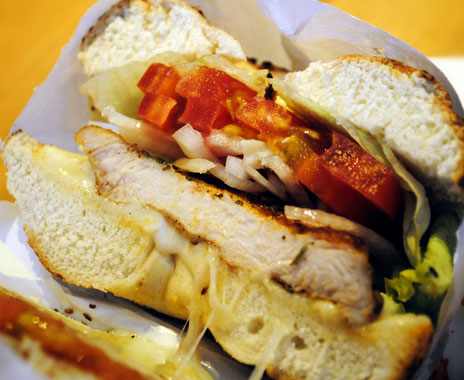It probably goes without saying that restaurants would like to put 2017’s third quarter in the rearview. Historically, thanks to back-to-school promotions, it’s tough enough on its own. But this past year was a different kind of beast altogether. Hurricanes Harvey, Irma, and Maria cracked the financial landscape across the industry.
BDO’s latest edition of The Counter, an industry benchmarking update that collects data from publicly traded restaurant companies, captured statistics from the tough period. Overall, same-store sales dropped 0.4 percent for restaurants. As tough as the climate was in general, it was noticeably difficult for fast casual. The segment experienced the largest change of any, reporting an overall 2.1 percent decrease. Cost of sales was 30.7 percent—the highest of any segment. Labor was 28.8 percent, and prime costs were 59.5 percent.
Fast casual is a tough segment to measure, though. It’s worth noting, especially in the past few years, how much has changed in terms of classification. Fast casual 2.0, or what you might define as chef-driven fast casual, is typically pretty different from those larger, publicly traded staples. For instance, Chipotle and Modern Market are rather different operations.
In the case of BDO’s data, some of the larger fast casual players weighed down the segment. Fiesta Restaurant Group was hit especially hard by the hurricanes. Nearly 25 percent of the company’s base is located in the Houston area. It closed 43 Taco Cabanas and two Pollo Tropicals during Harvey. In Florida and Atlanta, 149 Pollo Tropicals were closed and affected to varying degrees during Irma. The company estimated the hurricanes negatively impacted adjusted EBITDA and income loss from operations by about $3–$4 million at Pollo Tropical and $1-$1.15 million at Taco Cabana, and that same-store sales and transactions were hurt 5.5–6 percent at Pollo Tropical and 2–3 percent at Taco Cabana, respectively.
Still, the slowdown of fast casual in general is nothing new. But it’s not a market share problem. TDn2K’s Black Box Intelligence research, encompassing a sample of more than 125,000 locations, showed that more than 70 percent of all dollars spent in chain restaurants in the first three quarters went to quick service and fast casual. Perhaps this overall growth speaks to some of the same-store sales slowdown. More choices, more units, more competition.
And speaking of quick service, BDO’s data showed positive gains in the segment. Quick service same-store sales increased 0.8 percent.
The top gainer, however, was pizza, like usual. Publicly traded pizza brands gained 3.2 percent in same-store sales through the third quarter. “This growth is owed to Domino’s continued domination as the company tailors its rewards program and improves digital experiences,” BDO said in the report. “For instance, the company recently announced a partnership with the office chat platform, Slack, which has 3 million daily active users, allowing hungry users to slack’ a pizza order without opening a browser.”
In fact, if you removed Domino’s, which saw its same-store sales grow 8.4 percent, year-over-year, in the third quarter, the segment would have actually experienced a 0.8 percent drop. Pizza Hut is on the upward swing, breaking a streak of five consecutive quarters of declining sales with a 1 percent comps increase.
Sales at casual and upscale casual restaurants fell 0.9 percent and 0.4 percent, respectively. Texas Roadhouse was the leader with a 4 percent increase thanks to higher traffic. Read more on the brand’s no-nonsense approach to success here.
Applebee’s saw its comps fall 7.3 percent as it continues toward its target of closing underperforming locations—up to 135 in this fiscal year. Eddie V’s led the upscale brands with a 3.5 percent gain, while Sullivan’s Steakhouse watched its same-store sales fall 3.8 percent driven, according to BDO, by the elimination of lunch at certain locations, which started in the second quarter.
For commodities and cost of sales across the industry, there were some interesting notes. Cost of sales rose 28.9 percent, an increase of 0.2 percent over the comparable period last year. The only segment that did not experience a modest increase in cost of sales was pizza, where lower cheese prices helped offset other expenses.
Commodities fluctuated throughout the quarter. Poultry, fresh vegetables, and pork prices were up 2.5 percent, 4 percent, and 4.2 percent, respectively. Egg and beef prices dropped 3.9 percent and 0.6 percent, respectively.
“As companies work to cater to consumers’ demands for high quality and freshness, restaurants will have to get creative with menu engineering to satisfy these cravings while managing somewhat unpredictable costs,” BDO said.
On the labor front, costs rose throughout every segment. The average workforce price tag increased 0.7 percent compared to the 2016 period.
“To combat minimum wage upticks, some restaurants are dissecting back-of-the-house operations to see where they can cut prep time and make smarter staffing choices based on time of day and predictable traffic increases,” BDO said.










